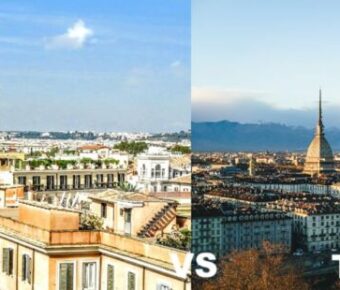
Shanghai vs Hong Kong: 5 Key Differences Every Traveler Should Know in 2025
Thinking about a trip to China and can’t decide between Shanghai or Hong Kong? These two iconic Asian cities offer completely different experiences despite being major financial hubs. Hong Kong surpasses Shanghai in many aspects, including food quality, cultural attractions, architecture, and natural scenery. Meanwhile, Shanghai offers a more affordable travel experience with lower accommodation, dining, and public transportation costs.
Shanghai represents mainland China with its blend of modern skyscrapers and traditional Chinese culture, where Mandarin is the primary language. The city boasts a population of over 24 million people, making it significantly larger than Hong Kong. Despite its size, Shanghai provides travelers with better value, allowing your travel budget to stretch further.
With its British colonial past, Hong Kong stands apart with its unique blend of Eastern and Western influences. The city operates under a different political system and primarily speaks Cantonese.
Hong Kong’s excellent English signage makes it somewhat easier to navigate than Shanghai, and its compact size means attractions are closer together. However, it has a higher price tag for everything from hotels to meals.
Contents
- Historical Context
- Formation and Development
- Colonial Influences
- Modern Evolution
- Geography and Climate
- Topography and Layout
- Weather Patterns
- Cultural Landscape
- Language and Dialects
- Culinary Scenes
- Religious and Spiritual Sites
- Economic and Business Environment
- Industry and Commerce
- Market Comparison
- Urban Features
- Architectural Highlights
- Public Spaces and Parks
- Tourist Attractions and Sightseeing
- Must-See Landmarks
- Hidden Gems
- Living Conditions
- Quality of Life
- Cost of Living
- Pollution and Sustainability
- Transportation Systems
- Public Transit Options
- Ease of Travel
- Cultural Exchange and Influence
- Art and Literature
- International Relations
- Frequently Asked Questions
- What are the differences in living expenses between Shanghai and Hong Kong?
- How does the economic output of Shanghai compare to that of Hong Kong?
- Can you contrast the cultural experiences one would encounter in Shanghai versus Hong Kong?
- What should travelers consider when choosing between Shanghai Disneyland or Hong Kong Disneyland?
- What are the nuances of business and career opportunities in Shanghai compared to Hong Kong?
- How do travel times and distances compare when flying between Shanghai and Hong Kong?
- More Travel Guides
Historical Context
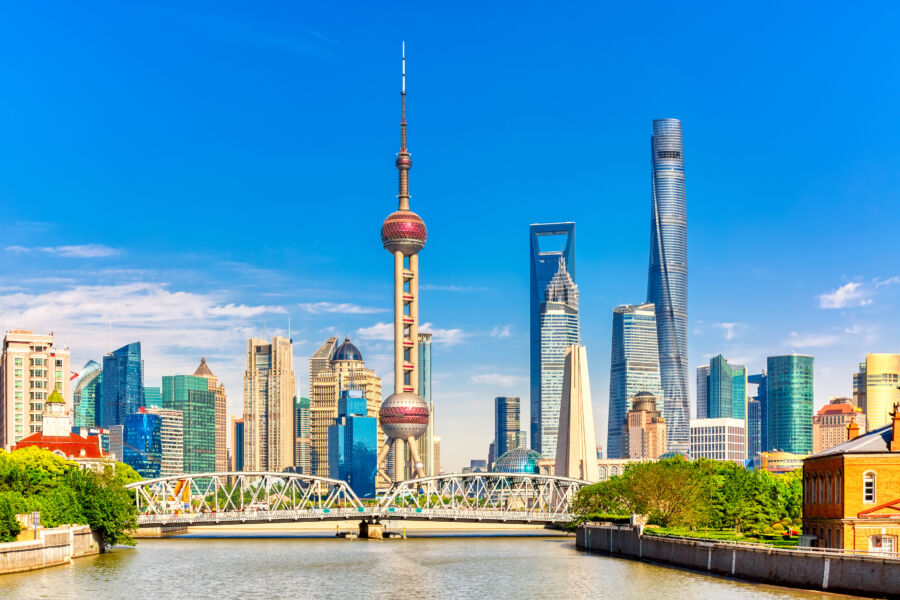
Shanghai and Hong Kong share fascinating histories that shaped their development into the global cities we know today. Both emerged as important trading ports but followed different paths under various influences.
Formation and Development
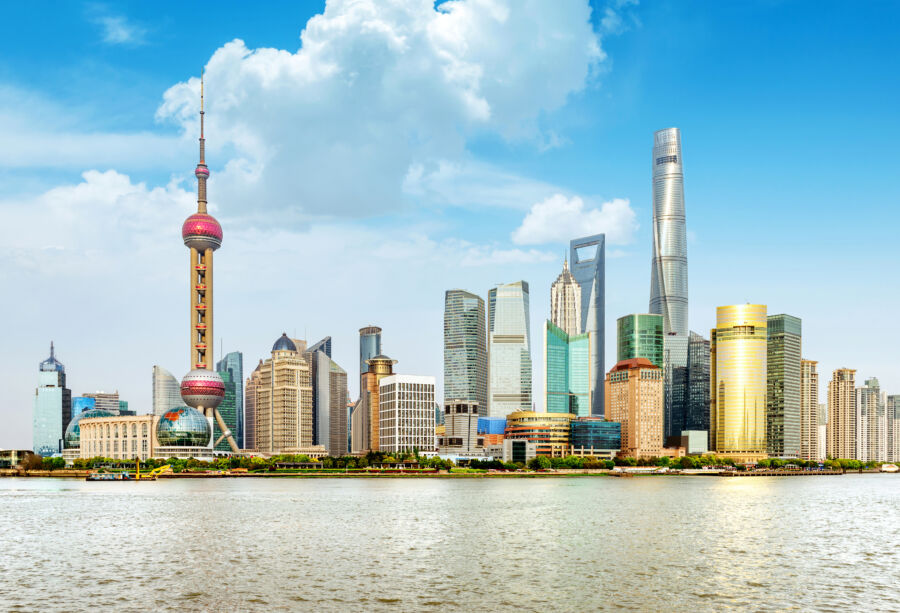
Shanghai began as a small fishing village before growing into a trading port during the Song and Yuan dynasties. Its location at the mouth of the Yangtze River made it an ideal spot for commerce. The city’s modern development took off after the First Opium War in 1842, when it was forced to open to foreign trade.
Hong Kong’s story began differently. Originally a collection of fishing villages, it became a British colony after the First Opium War.
The island was formally ceded to Britain in 1842 under the Treaty of Nanking. Later, in 1898, the New Territories were leased to Britain for 99 years.
Both cities benefited from their strategic coastal positions. Their deep natural harbors allowed them to become vital shipping and trading hubs connecting China with the rest of the world.
Colonial Influences

Shanghai’s colonial past differs from Hong Kong’s complete colonization. Shanghai was divided into concessions controlled by different powers—the British, French, and Americans all established territories. The French Concession became famous for its tree-lined avenues and European architecture, which still charm visitors today.
Hong Kong, meanwhile, developed entirely under British rule for over 150 years, creating a unique blend of Eastern and Western cultures. Victoria Peak became home to wealthy British colonists seeking cooler air and panoramic views above the bustling harbor.
These different colonial experiences left lasting impacts. Shanghai developed a more mixed political and cultural identity, while Hong Kong embraced British legal, educational, and governmental systems that persist in modified forms today.
Modern Evolution

After the Communist revolution in 1949, Shanghai’s development stalled as China focused inward. The city lost much of its international character until economic reforms began in the 1980s. Pudong’s dramatic rise from farmland to a futuristic skyline symbolizes Shanghai’s remarkable rebirth.
Hong Kong continued growing as a capitalist enclave under British rule. It transformed from a manufacturing hub in the 1960s-70s to a financial powerhouse by the 1980s. The city returned to Chinese sovereignty in 1997 under the “One Country, Two Systems” policy.
Today, both cities face unique challenges. Shanghai works to balance central government control with international ambitions. Hong Kong navigates its complex relationship with mainland China while preserving its distinct identity and freedoms.
Geography and Climate
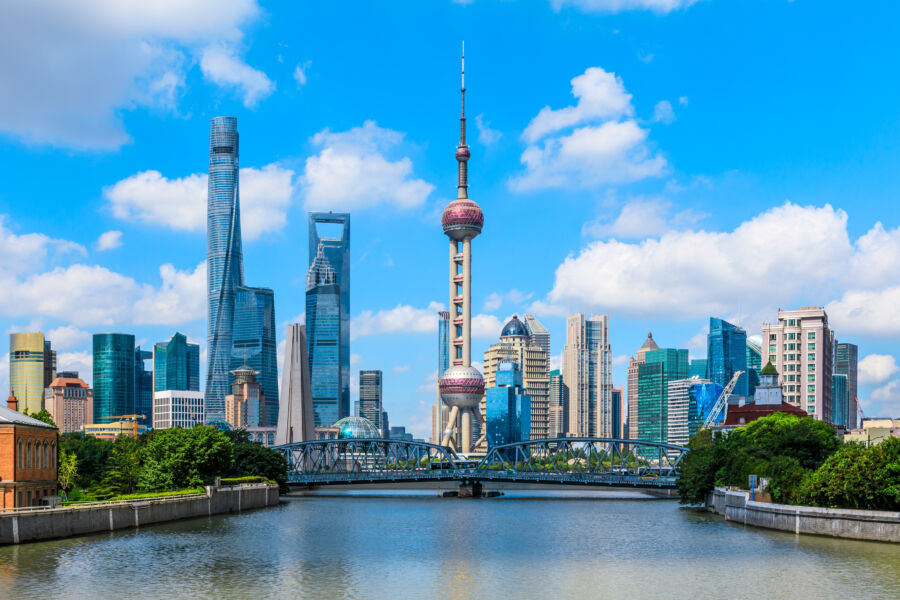
Shanghai and Hong Kong share humid subtropical climates but differ dramatically in their physical landscapes and seasonal weather patterns. These differences shape each city’s daily life, architecture, and tourism opportunities.
Topography and Layout

Hong Kong boasts an incredibly diverse geography that combines urban density with surprising natural beauty. The city is built around a natural deep-water harbor surrounded by over 200 islands and hilly terrain. About 75% of Hong Kong’s land is undeveloped – filled with lush country parks, mountains, and beaches.
Shanghai, in contrast, sits on a relatively flat alluvial plain beside the Yangtze River Delta. The city lacks Hong Kong’s dramatic hills and island geography. Instead, Shanghai is divided by the Huangpu River into Puxi (the older western section) and Pudong (the newer eastern district with its famous skyline).
This topographical difference impacts everything from transportation to urban planning. Hong Kong’s MTR subway system navigates challenging elevation changes, while Shanghai’s flatter terrain allowed for more grid-like city development.
Weather Patterns

Both cities experience hot, humid summers, but their winters tell different stories. Shanghai winters can be surprisingly cold, with temperatures occasionally dropping below freezing. Some years even bring light snow! Hong Kong winters are milder, rarely dipping below 10°C (50°F).
Summer in both cities means intense heat and humidity. Shanghai can feel even steamier than Hong Kong during peak summer months, sometimes exceeding 40°C (104°F). Hong Kong gets relief from sea breezes but faces more tropical storms and typhoons.
Rainfall patterns also differ. Hong Kong receives more annual precipitation, concentrated during the May-September monsoon season. Shanghai’s rain spreads more evenly throughout the year, with a rainy peak from April to September.
Cultural Landscape

The cultural scenes of Shanghai and Hong Kong reflect their unique histories and influences. Shanghai showcases a blend of traditional Chinese customs with modern international flair. At the same time, Hong Kong’s culture has been shaped by British colonial rule and its position as a global financial hub.
Language and Dialects

Mandarin is the official language in Shanghai, though many locals speak Shanghainese (a Wu dialect). Street signs and public announcements are in Simplified Chinese characters, with English translations in tourist areas.
Hong Kong, on the other hand, is predominantly Cantonese-speaking. However, due to its British colonial past, English is widely spoken, especially in business settings and tourist destinations. Traditional Chinese characters are used instead of simplified ones in mainland China.
This language difference creates entirely different atmospheres – Shanghai feels more authentically mainland Chinese, while Hong Kong has a distinctive bilingual character that makes it more accessible to international visitors.
Culinary Scenes
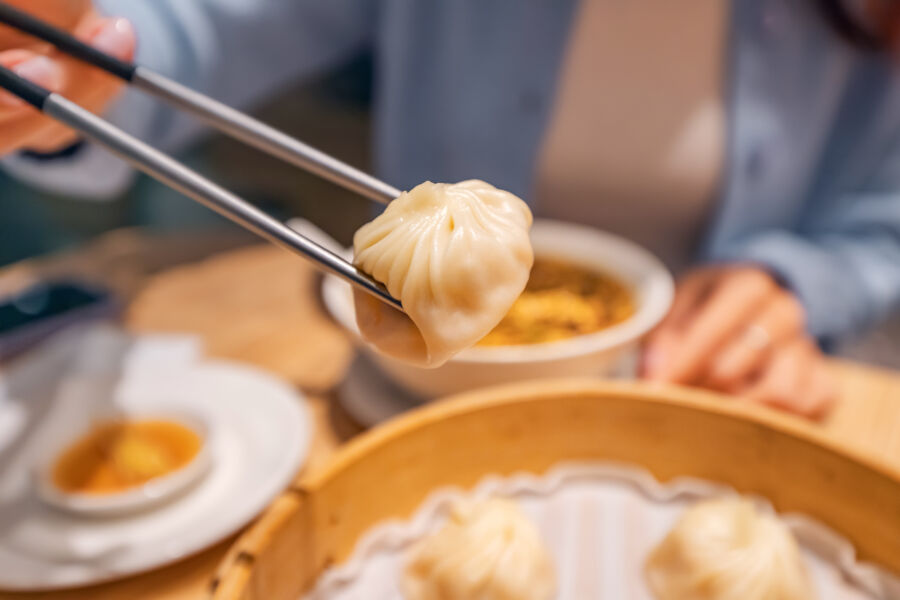
Shanghai’s food scene blends traditional Jiangnan cuisine with international options. The city is famous for xiaolongbao (soup dumplings), hairy crab, and sweet dishes that reflect local taste preferences. High-end restaurants and street food stalls exist side by side.
Hong Kong boasts an incredible food culture, from Michelin-starred restaurants to bustling dai pai dongs (open-air food stalls). Dim sum is a cultural institution, with locals gathering for yum cha (tea and dim sum) sessions. Due to the city’s coastal location, seafood dishes are exceptional.
Both cities offer amazing food, but Hong Kong generally wins for variety and accessibility. Its smaller footprint means amazing restaurants are packed closer together, making food exploration easier for visitors than in sprawling Shanghai.
Religious and Spiritual Sites

Shanghai’s religious landscape features beautiful Buddhist temples like Jade Buddha and Jing’an Temple, which coexist peacefully with modern skyscrapers. The city also has notable Christian churches from its colonial era, including St. Ignatius Cathedral.
Hong Kong offers more religious diversity, with traditional Chinese temples like Wong Tai Sin and Man Mo Temple as active spiritual centers. The Tian Tan Buddha (Big Buddha) on Lantau Island is a major pilgrimage site. Christianity has a strong presence, too, with historic churches scattered throughout the territory.
The spiritual sites in Hong Kong often feel more integrated into daily life. You’ll see locals burning incense and praying at neighborhood temples, while Shanghai’s religious sites sometimes feel more like tourist attractions than active places of worship.
See Related: Off-the-Beaten-Path Cities in Asia for Digital Nomads
Economic and Business Environment
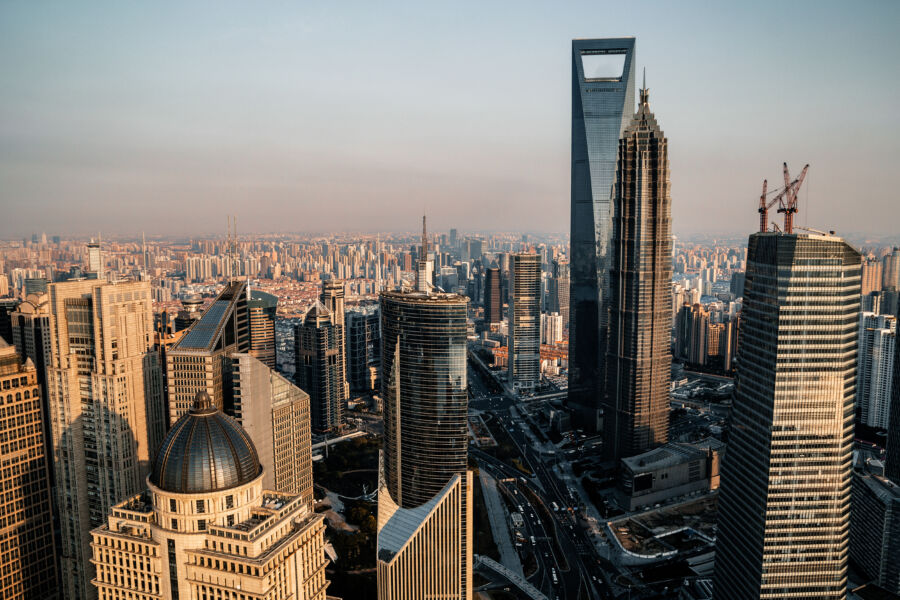
Hong Kong and Shanghai represent two distinct Asian economic powerhouses with different strengths and market approaches. While Hong Kong is a global financial hub with a service-oriented economy, Shanghai functions as mainland China’s economic engine with a more mixed economic structure.
Industry and Commerce
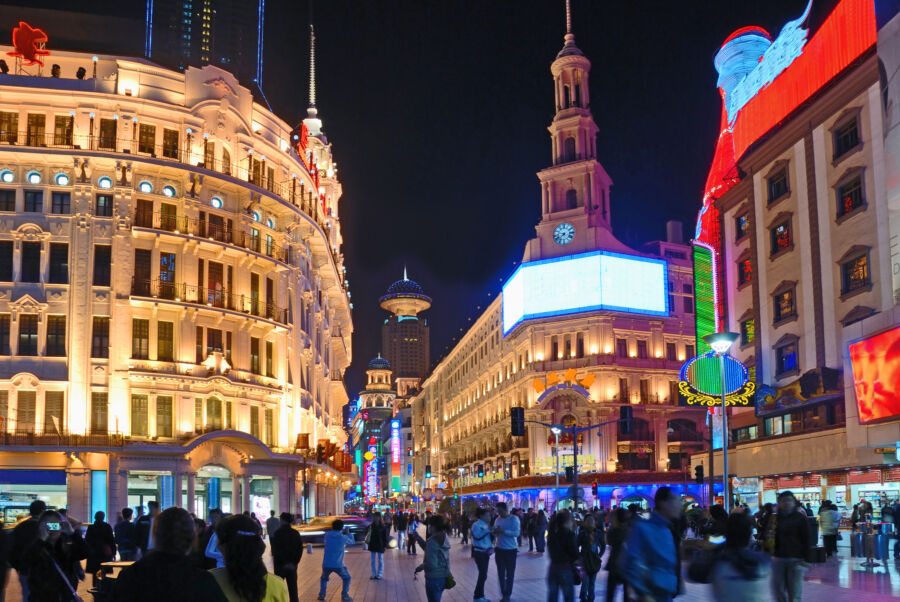
Hong Kong’s economy revolves primarily around finance, logistics, and professional services. The city maintains a highly internationalized business environment with minimal government intervention. Based on British common law, its legal system offers strong intellectual property protection that many businesses find attractive.
Shanghai, on the other hand, features a more diverse economic landscape. The city combines manufacturing, technology, and services, reflecting mainland China’s economic priorities. Shanghai hosts the world’s busiest container port and has become a hub for domestic and international corporations.
The salary structures differ noticeably between the two cities. According to industry research, expats in Shanghai often command higher compensation packages than their Hong Kong counterparts. This reflects the challenges and opportunities of working in mainland China’s business environment.
Market Comparison

Hong Kong enjoys several advantages over Shanghai in the financial realm. The city allows flexible currency conversion with no restrictions on capital movement. This freedom makes Hong Kong particularly attractive for international investment activities.
While Shanghai’s financial markets are growing rapidly, they still operate under more regulatory constraints. The Chinese government maintains stricter controls over currency conversion and capital flows, which can complicate international business operations.
Hong Kong dominates global bonds, with approximately $11 billion in international bond trading, while Shanghai’s international bond market remains limited. This highlights Hong Kong’s deeper integration with global financial systems.
Both cities compete fiercely for status as Asia’s premier financial center. Hong Kong offers greater international connectivity and regulatory transparency, while Shanghai leverages its position as the gateway to China’s massive domestic market.
Urban Features

Shanghai and Hong Kong showcase distinct urban landscapes that reflect their unique histories and development paths. Both cities offer impressive skylines but differ significantly in their architectural styles and public spaces.
Architectural Highlights
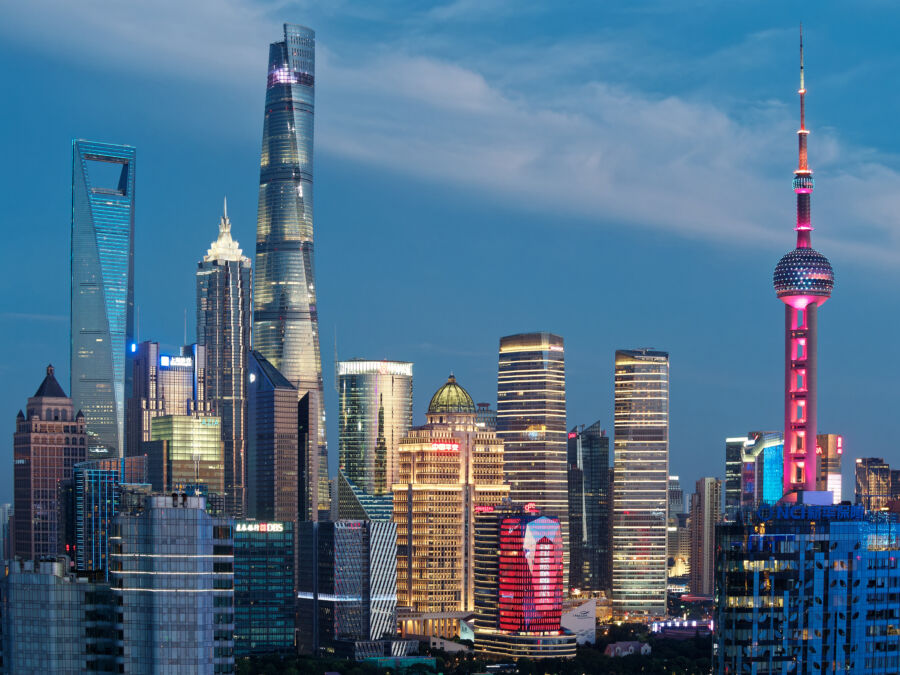
Shanghai’s skyline is dominated by the futuristic Pudong district, with its iconic Oriental Pearl Tower and Shanghai Tower (the second-tallest building in the world). The contrast between Pudong’s modern skyscrapers and the historic Bund area creates a striking visual experience. The Bund features beautiful colonial-era buildings with European architectural styles, including Gothic, Baroque, and Art Deco influences.
Hong Kong’s architecture is more densely packed due to limited space. The city is famous for its forest of skyscrapers squeezed between Victoria Harbor and the mountains.
Notable buildings include the Bank of China Tower, its distinctive angular design, and the International Commerce Centre. Shanghai has more architectural variety and planned development, while Hong Kong’s buildings often seem to grow organically, creating a more chaotic but vibrant urban feel.
Public Spaces and Parks
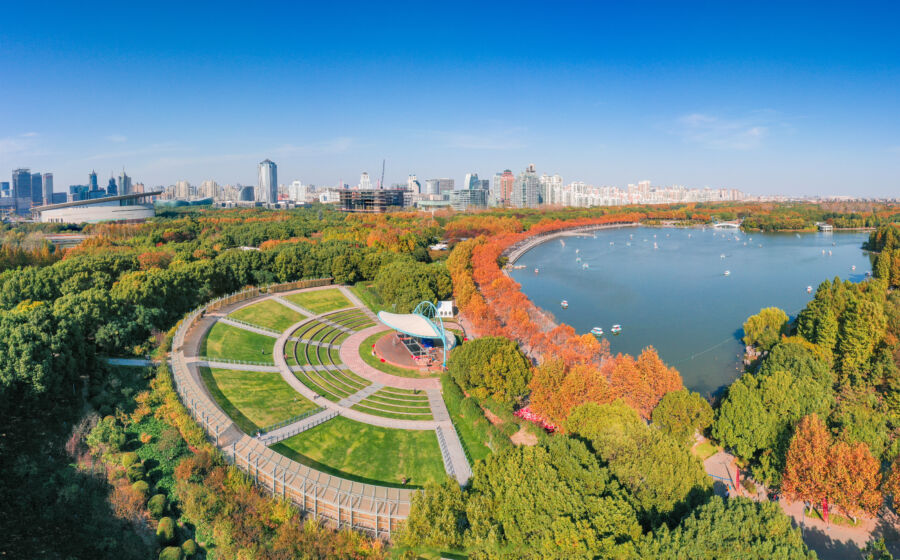
Thanks to its newer development and larger land area, Shanghai boasts more generous public spaces. The city features beautiful urban parks like Century Park and People’s Square. The recently redeveloped waterfront areas along the Huangpu River offer pleasant walking paths with spectacular views of the Bund and Pudong skylines.
Hong Kong makes remarkable use of its limited space with creative parks and public areas. Victoria Park and Hong Kong Park provide green retreats amid the dense cityscape.
The city’s real advantage lies in its proximity to nature – you can go from concrete jungle to actual jungle in less than 30 minutes. Public transportation in both cities is excellent, but Hong Kong’s MTR system is often considered more efficient and easier to navigate than Shanghai’s metro, making urban exploration more convenient for visitors and residents.
Tourist Attractions and Sightseeing
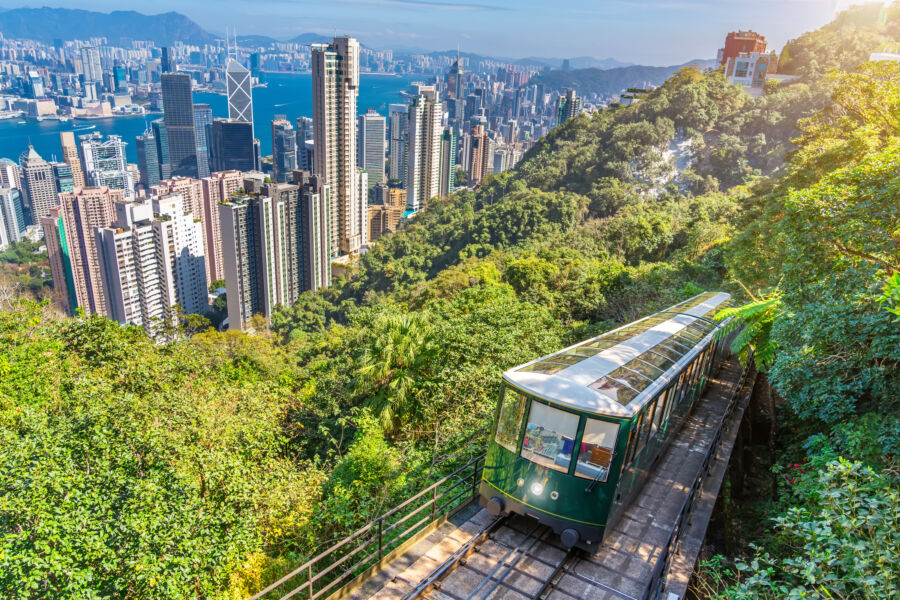
Shanghai and Hong Kong offer incredible attractions showcasing their unique cultural heritage and modern developments. Each city boasts iconic landmarks alongside lesser-known spots that provide authentic experiences for travelers.
Must-See Landmarks

Shanghai’s most famous attraction is undoubtedly The Bund, a waterfront area with stunning colonial architecture facing the futuristic Pudong skyline. It’s especially breathtaking at night when the buildings light up in a dazzling display. You can book sightseeing tours to learn about its history.
The French Concession offers tree-lined streets and beautiful European-style buildings, giving visitors a glimpse into Shanghai’s international past. Don’t miss Yu Garden, a 400-year-old classical Chinese garden in the Old City.
In Hong Kong, Victoria Peak provides spectacular panoramic views of the harbor and cityscape. Take the historic Peak Tram up for an unforgettable experience.
The Avenue of Stars along Victoria Harbor celebrates Hong Kong cinema and offers perfect spots for skyline photos. The Big Buddha on Lantau Island is another must-visit, accessible by the scenic Ngong Ping 360 cable car.
Hidden Gems

Beyond Shanghai’s main attractions, the Zhujiajiao and Qibao water towns make perfect day trips. These ancient towns with stone bridges and canals offer a peaceful contrast to the bustling city. Arrange activities that take you off the beaten path.
The 1933 Shanghai building, a former slaughterhouse with unique architecture, now houses boutiques and cafés. M50 Art District showcases contemporary Chinese art in converted factory spaces. Hong Kong’s hidden treasures include the fishing village of Tai O, with its stilt houses, and the peaceful Chi Lin Nunnery adjacent to Nan Lian Garden.
For beach lovers, Shek O and Big Wave Bay offer relaxing escapes just a short trip from the city center. The centuries-old walled village of Kat Hing Wai provides a fascinating glimpse into traditional Hakka culture and architecture that few tourists discover.
Living Conditions
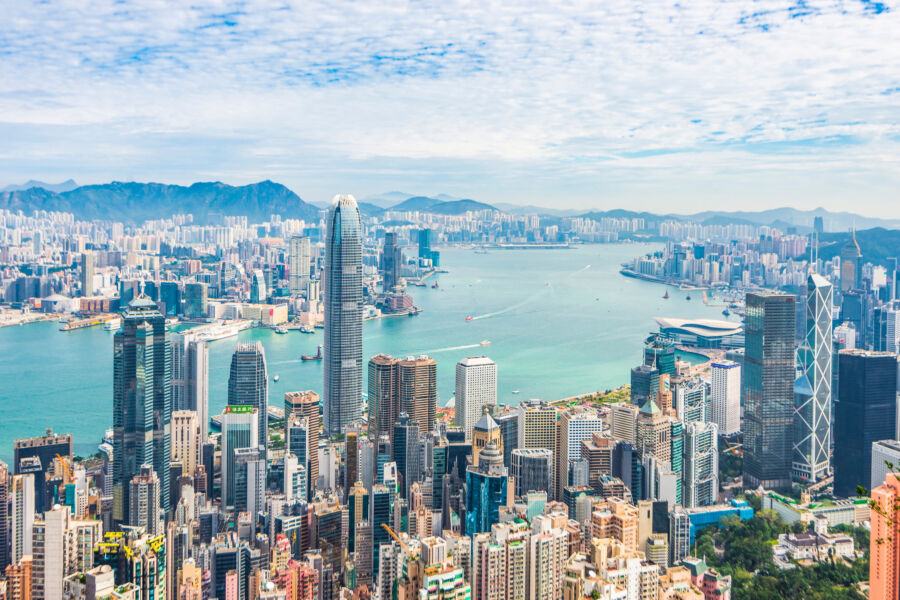
Living conditions differ significantly in several key areas between Shanghai and Hong Kong. Both cities offer unique environments with distinct advantages and challenges for residents, from apartment sizes to environmental concerns.
Quality of Life

Shanghai gives you more space to breathe—literally and figuratively. Most expats live in larger apartments than the notoriously cramped Hong Kong housing. In Shanghai’s popular Jing’an district, foreigners enjoy spacious living arrangements that would cost a fortune in Hong Kong.
The expat communities in both cities are vibrant and diverse. Hong Kong has a slight edge regarding Western conveniences and English usage, making the adjustment easier for newcomers from Europe or North America.
Weather creates another stark difference. Shanghai experiences four seasons, including uncomfortably hot summers (up to 35°C) and surprisingly cold winters. Meanwhile, Hong Kong maintains a more tropical climate year-round, though the humidity can be challenging for some.
Cost of Living

Your money stretches further in Shanghai than in Hong Kong. Housing costs represent the most dramatic difference between the two cities.
For the same price, you might get a studio apartment in Hong Kong or a spacious two-bedroom in Shanghai. This housing reality significantly affects your overall quality of life and monthly budget.
Daily expenses also favor Shanghai:
- Groceries: 15-25% cheaper in Shanghai
- Dining out: Local restaurants cost less in Shanghai
- Transportation: Shanghai’s metro system is less expensive than Hong Kong’s
- Entertainment: Movies, gyms, and other activities cost less in Shanghai
The trade-off comes with salaries, as Hong Kong positions often offer higher compensation to offset the increased living expenses.
Pollution and Sustainability

Air quality remains a significant concern in Shanghai compared to Hong Kong. Despite improvements in recent years, Shanghai still experiences more days with unhealthy air quality levels, especially during winter when coal heating increases pollution.
Hong Kong benefits from its coastal location and stronger wind patterns that help disperse pollutants. The city also implemented stricter environmental regulations earlier than mainland China.
Both cities face sustainability challenges with their massive populations. Water quality issues affect both locations, though Hong Kong’s drinking water infrastructure is generally considered more reliable.
Green spaces offer respite in both urban jungles. Shanghai has developed impressive new parks in recent years, while Hong Kong benefits from proximity to natural hiking areas just minutes from the city center.
See Related: Where to Stay in Hong Kong: Best Neighborhoods for Every Traveler
Transportation Systems

Hong Kong and Shanghai offer different approaches to moving people around their busy urban areas. Hong Kong is known worldwide for its efficient systems, while Shanghai has rapidly developed impressive transportation networks in recent years.
Public Transit Options

Hong Kong’s MTR (Mass Transit Railway) system is often ranked among the world’s best. It’s incredibly efficient and clean and covers most areas of the city. The Octopus card makes payment simple across all transit types.
Buses, minibusses, trams, and ferries complement the rail system. The iconic Star Ferry crossing the harbor gives tourists a cheap but scenic skyline view.
Shanghai’s metro system is newer but more extensive, with the world’s longest network by route length. The city has invested heavily in public transportation infrastructure over the past two decades. Like Hong Kong, Shanghai offers comprehensive bus routes and ferry services across the Huangpu River.
A key difference is ownership structure. Hong Kong’s system operates under one organization (MTR Corp), making coordination smoother than Shanghai’s more divided approach.
Ease of Travel

Hong Kong’s compact size gives it an advantage for travelers. Most attractions are accessible within 30-45 minutes using public transit.
Clear English signage makes navigation simple for tourists. The airport-to-city connection via Airport Express is remarkably efficient, getting visitors downtown in just 24 minutes.
Shanghai covers a much larger area, making some journeys more time-consuming. However, its metro is well-marked with English translations and color-coded lines. The magnetic levitation train (Maglev) offers an impressive airport connection, reaching 430 km/h speeds.
Traffic congestion affects both cities, but Hong Kong’s restrictions on private car ownership help reduce this issue. Taxi services in both cities are affordable compared to Western countries, with Hong Kong cabs slightly more expensive than Shanghai’s. Comparing flight options in advance makes sense for visitors planning to explore either city.
Cultural Exchange and Influence
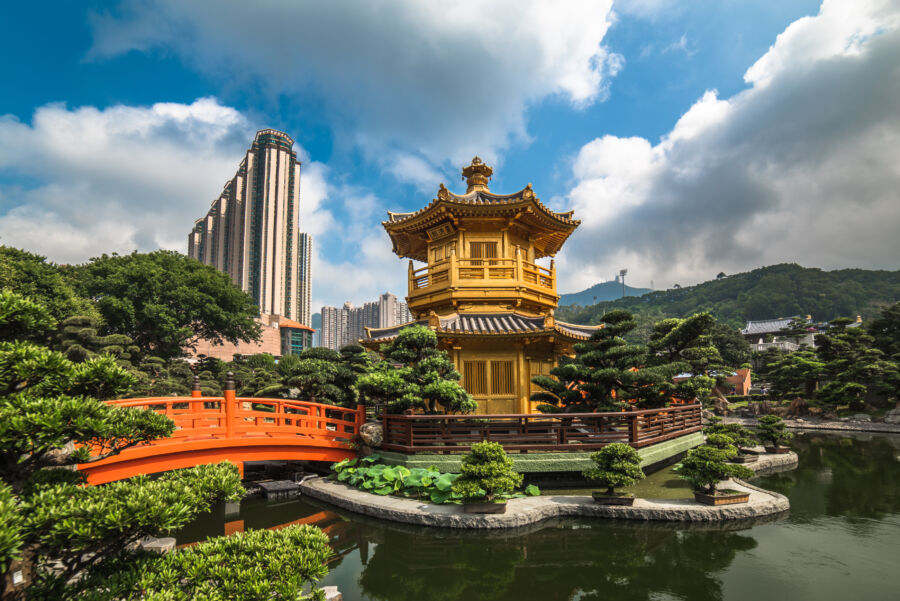
Shanghai and Hong Kong represent two different approaches to cultural exchange. Both cities blend Eastern traditions with Western influences, but they’ve developed distinct cultural identities through different historical paths.
Art and Literature

Shanghai’s art scene has roots in the 1920s and 30s when it was known as the “Paris of the East.” The city blends traditional Chinese aesthetics with modern influences. In places like the Power Station of Art, everything from classical Chinese paintings to contemporary installations will be found.
Hong Kong’s artistic expression has been shaped by its British colonial past. The city embraces a more Western approach to art while maintaining Chinese elements. M+ Museum and Hong Kong Arts Centre showcase this unique blend.
Literature follows similar patterns. Shanghai writers often explore themes of national identity and social change. Meanwhile, Hong Kong literature frequently deals with displacement and cultural hybridity themes.
Both cities serve as creative hubs, but Hong Kong has traditionally enjoyed more creative freedom. This has allowed for more experimental art forms and literary expression.
International Relations

Shanghai functions as mainland China’s gateway to the world. The city hosts major international events like the China International Import Expo, and its international relations are closely aligned with Beijing’s foreign policy goals.
The Shanghai Cooperation Organisation, headquartered in Beijing but named after Shanghai, demonstrates the city’s importance in China’s diplomatic efforts. Shanghai’s international partnerships focus on economic cooperation and cultural exchange programs.
Hong Kong developed international connections through its history as a British colony and global financial center. The city maintains separate memberships in many international organizations under the “one country, two systems” framework.
Both cities serve as entry points for foreign businesses and tourists to China. Hong Kong’s international relations have traditionally been more Western-oriented, while Shanghai balances Eastern traditions with global engagement. The ancient Silk Road’s legacy of cross-cultural exchange continues in both cities, though in different forms suited to the modern era.
See Related: Shanghai vs Seoul: Key Differences Between Asia’s Urban Giants in 2025
Frequently Asked Questions

Shanghai and Hong Kong are two major Asian metropolises with distinctive cost of living, economic strength, and cultural atmosphere. These cities offer different experiences for visitors, residents, and business professionals.
What are the differences in living expenses between Shanghai and Hong Kong?
Hong Kong typically has higher housing costs than Shanghai, with smaller apartments commanding premium prices. Rent for a one-bedroom apartment in Hong Kong’s central areas can be nearly double what you’d pay in Shanghai.
Food costs vary significantly between the cities. Shanghai offers more affordable local dining options, while Hong Kong’s food scene tends to be pricier overall, especially for international cuisine.
Transportation is relatively inexpensive in both cities, with efficient metro systems. Hong Kong’s MTR system is slightly more expensive but often considered more comprehensive than Shanghai’s subway network.
How does the economic output of Shanghai compare to that of Hong Kong?
Shanghai has grown to have a larger GDP than Hong Kong, reflecting mainland China’s economic expansion. The city serves as the commercial and financial hub of mainland China.
Hong Kong’s service-oriented economy focuses heavily on finance, trade, and transportation. Despite Shanghai’s growth, its role as an international gateway to China remains important.
Shanghai’s mixed economy includes manufacturing, technology, and services, making it more diversified than Hong Kong’s primarily service-based economy. This diversification has helped fuel Shanghai’s rapid economic growth in recent decades.
Can you contrast the cultural experiences one would encounter in Shanghai versus Hong Kong?
Hong Kong offers a distinctive blend of British colonial influences and Cantonese culture. The city maintains a more international feel, with English being widely spoken and Western influences evident throughout.
Shanghai showcases a mix of traditional Chinese elements with modern and cosmopolitan influences. The city’s French Concession area reflects its unique colonial past, while areas like the Bund display impressive European architecture.
Language differences are notable, with Cantonese predominant in Hong Kong and Mandarin in Shanghai. This affects everything from street signs to daily interactions and entertainment options.
What should travelers consider when choosing between Shanghai Disneyland or Hong Kong Disneyland?
Shanghai Disneyland is newer and larger than its Hong Kong counterpart. It features unique attractions like TRON Lightcycle Power Run and the Pirates of the Caribbean: Battle for the Sunken Treasure, which isn’t available elsewhere.
Hong Kong Disneyland, while smaller, offers a more intimate experience with shorter lines during off-peak seasons. The park has its unique attractions like Mystic Manor.
Weather considerations matter when planning your visit. Shanghai experiences distinct seasons with hot summers and cold winters, while Hong Kong has a subtropical climate that can be uncomfortably humid during summer.
What are the nuances of business and career opportunities in Shanghai compared to Hong Kong?
According to industry reports, Shanghai offers higher salaries for expatriates than Hong Kong. The cost advantage affects overall compensation packages.
Hong Kong’s business environment traditionally offers greater international exposure and fewer regulatory barriers. The legal system based on British common law is familiar to Western businesses.
Mandarin language skills are almost essential for career advancement in Shanghai, while English proficiency can be sufficient for many positions in Hong Kong. This language factor significantly impacts job opportunities for foreign professionals.
How do travel times and distances compare when flying between Shanghai and Hong Kong?
The flight between Shanghai and Hong Kong takes approximately 2.5 hours and covers a distance of about 760 miles (1,220 kilometers). Multiple airlines offer several daily flights between the cities.
Immigration procedures differ significantly. When you fly to Shanghai from Hong Kong, you must go through mainland China immigration. This can be more time-consuming than domestic arrivals.
Both cities feature world-class international airports. Shanghai has two major airports (Pudong and Hongqiao), while Hong Kong International Airport on Lantau Island is one of Asia’s busiest aviation hubs.

